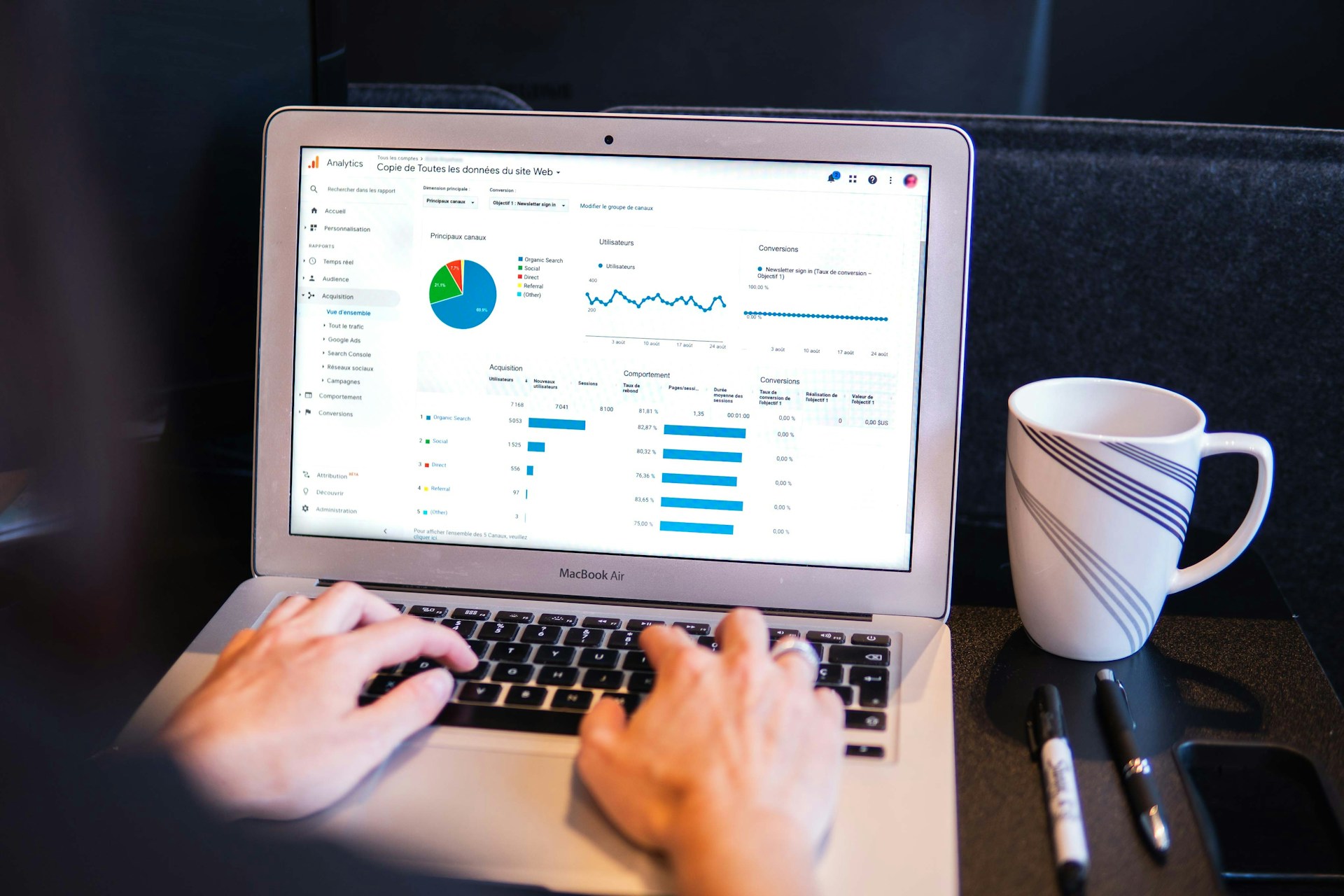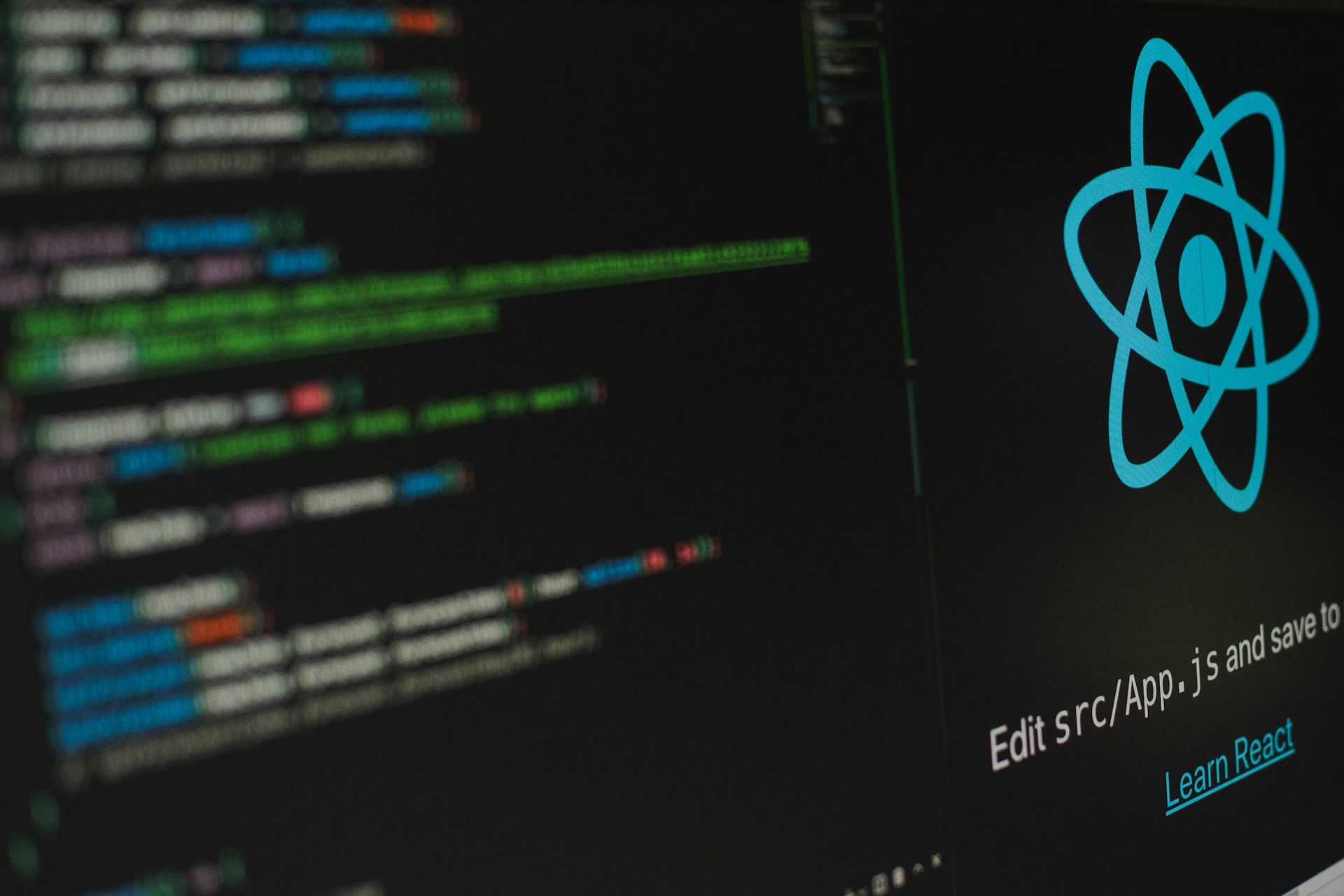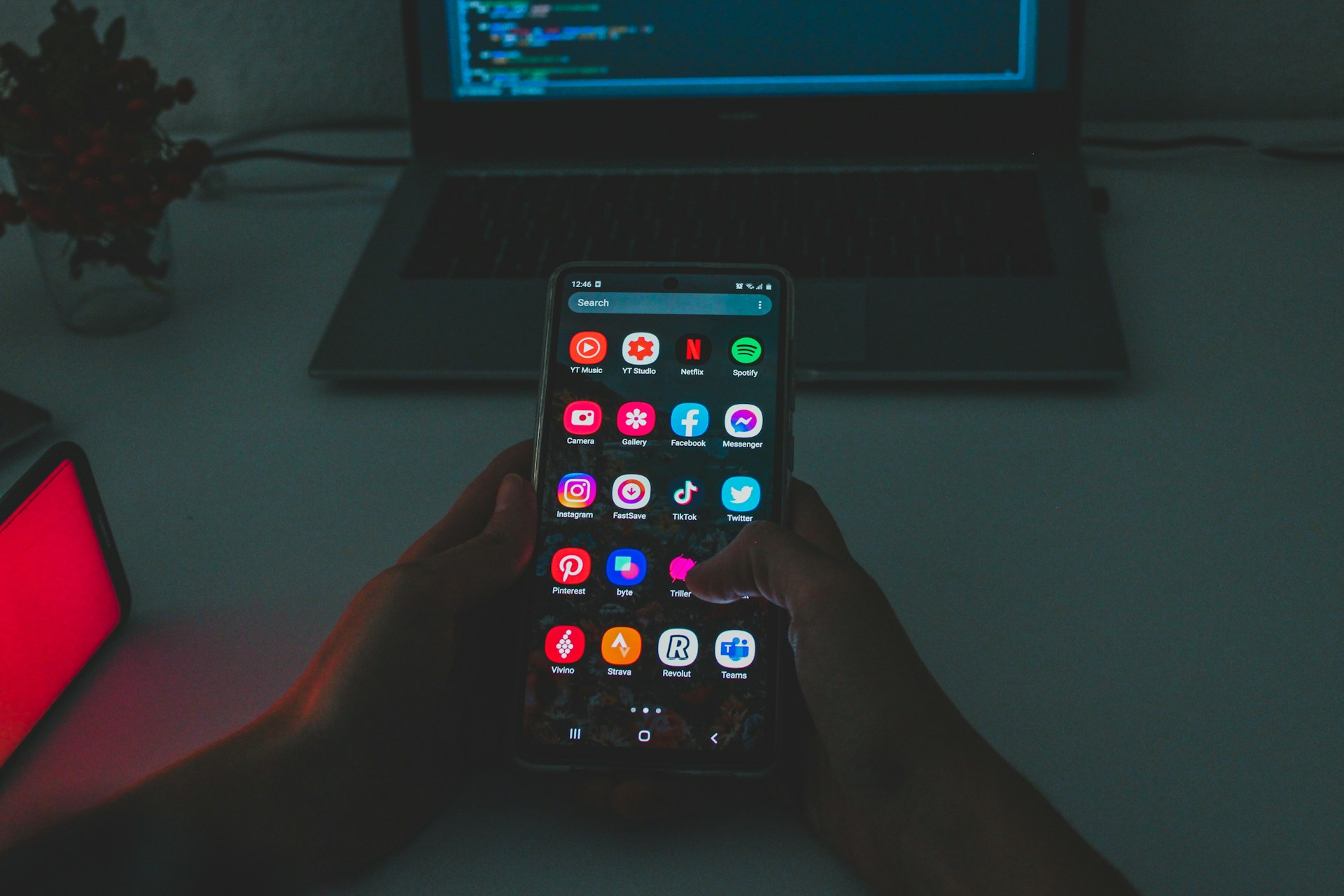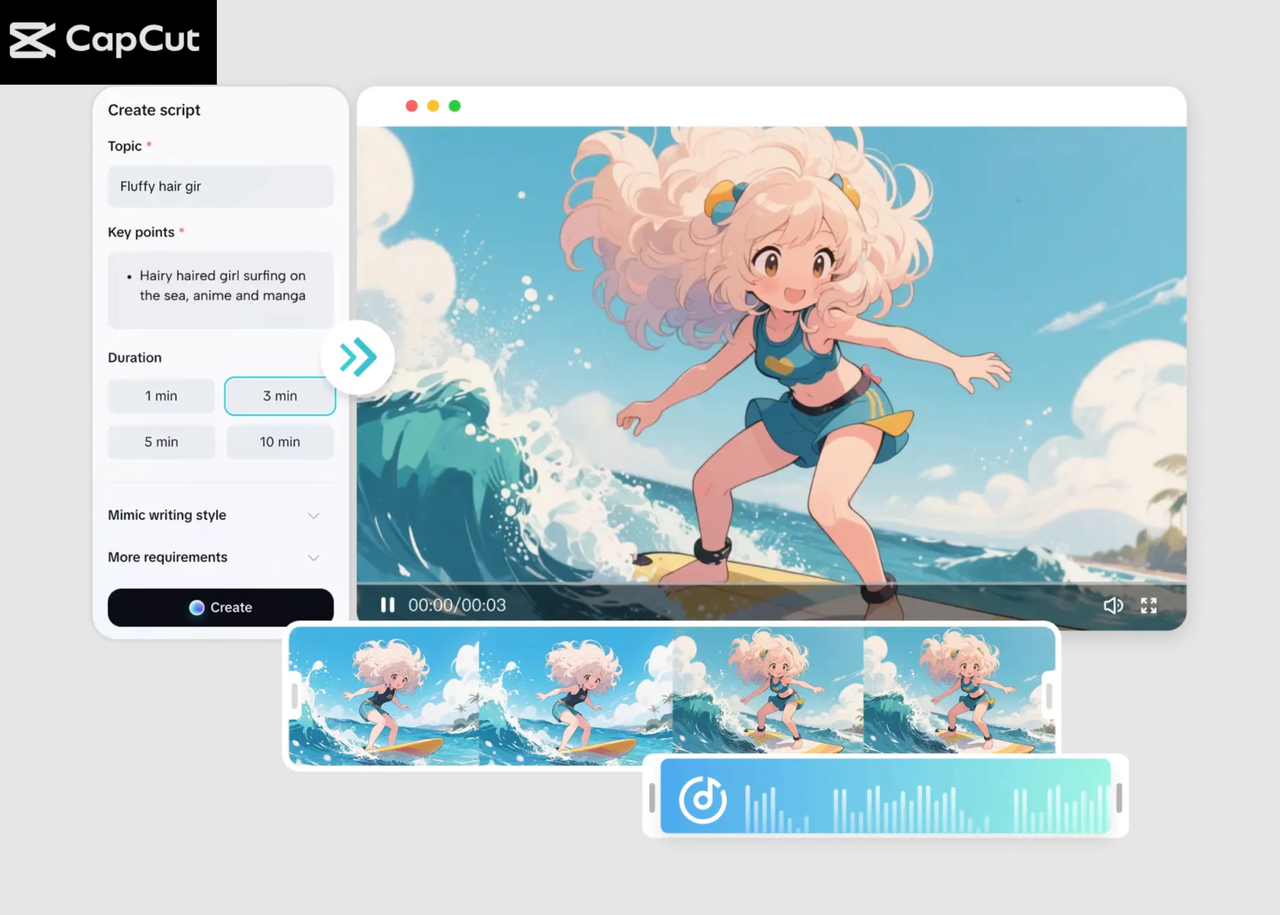Launching a successful product requires understanding app development for startups from day one. By balancing budgets, technology, and user needs, founders can build apps that stand out and thrive long term.
Key takeaways
- Effective app development hinges on a structured, multi-stage approach.
- Leveraging the right tools and technologies at each phase is crucial for efficient development.
A Founder’s Roadmap to App Development for Startups
As a founder, you need to focus on a structured, step-by-step process and leverage the right tools at each stage. Here’s a comprehensive breakdown on how to build a startup app.
1. Market Research Tools

data analysis (source: Unsplash)
Validating your market is essential before you commit resources to development. This step confirms whether people actually need your solution, while also revealing competitors and market patterns. These tools will support your exploration:
- Google Trends: Identify cyclical market fluctuation and track evolving consumer interest across different periods.
- SEMrush or Similarweb: Uncover competitor strength, organic reach, and keyword opportunities to guide your positioning.
- Typeform or SurveyMonkey: Launch surveys to collect valuable user insights and pain points straight from your audience.
- Hotjar: Use heatmaps and behavior recordings to see where visitors focus their attention and where they get stuck.
Effective market research dramatically reduces the risk of launching an app that fails to gain traction. It also helps you build stronger messaging and a clearer roadmap from day one.
Also Read: 7 Best Branding Tools for Startups to Build a Strong Identity
2. Defining the Minimum Viable Product (MVP)
An MVP allows you to test your idea in the real world without a heavy investment. The strategy is to focus on the minimum feature set needed to solve the user’s core problem. Here’s how to define it with purpose:
- Identify essential functionality: Which feature alone would deliver enough value for early adopters?
- Apply MoSCoW prioritization: Sort features into Must have, Should have, Could have, or Won’t have for this stage.
- Prototype quickly: App development tools for startups, like Figma or Sketch, help you build interactive demos to gather reactions before coding.
- Validate interest: Conduct interviews, run user testing, or build a simple landing page to check if people are motivated to sign up.
Your MVP is best viewed as a real-world experiment to confirm product-market fit and collect learning. With the right mindset, you’ll treat early user interaction as valuable evidence for the next iteration.
3. Choosing the Right Tech Stack

Illustration of App Coding (Source: Unsplash)
Your technology choices influence how quickly you build, how easily you scale, and how simple it is to hire developers. Evaluate these recommendations:
- Frontend: React (web), Flutter (cross-platform mobile), Swift/Kotlin (native mobile).
- Backend: Node.js for fast development cycles, Django for its ready-made features, or serverless services like Firebase to remove infrastructure burdens.
- Database: PostgreSQL for strong relational data, MongoDB for more flexible and document-based structures.
- APIs: Design your APIs to be modular and well-documented, ready for future features.
- CI/CD: Streamline your release process using GitHub Actions or Jenkins to accelerate development cycles.
Choose technologies supported by a large talent pool to avoid hiring headaches as you grow. That way, you’ll ensure your team can maintain and scale the app without expensive rewrites.
Also Read: Business-Critical Core: Know Your Customer Checklist
4. Project Management and Collaboration
Smooth teamwork and clear processes can make or break your launch timeline. A solid collaboration toolkit is vital.
- Trello / Jira / Linear: Plan sprints, monitor progress, and keep track of bugs transparently.
- Slack / Discord: Enable swift and seamless collaboration across your development team.
- Notion / Confluence: Build a shared knowledge hub for documentation, meeting notes, and guidelines.
A structured approach ensures that everyone stays aligned and avoids costly misunderstandings. It also empowers your team to move faster and keep priorities crystal clear.
5. Testing and Feedback Loops

Testing & Feedback (Source: Unsplash)
Early testing pays dividends later by improving reliability and user satisfaction. Incorporate these strategies into your daily workflow.
- Automated testing: Use tools like Cypress or Jest on the frontend, and Detox for mobile.
- Beta testing: Distribute early birds through TestFlight (iOS) or Firebase App Distribution (Android).
- Analytics: Integrate Mixpanel or Amplitude to track user engagement, feature utilization, and navigation patterns.
- Qualitative insights: Combine quantitative data with direct user feedback to gain comprehensive behavioral understanding.
Do rapid and data-driven adjustments to ensure you refine what users actually want. Conduct regular testing to build confidence for deploying changes while minimizing potential risks.
6. Scaling from Day One
Even while developing your MVP, keep long-term growth in mind. As Appkodes suggests, a forward-looking mindset saves you costly reworks later. So, consider these when you do the scaling.
- Cloud services: Platforms like AWS, GCP, or Azure let you scale resources with demand.
- Code best practices: Maintain clean, easy-to-read code so future developers can onboard quickly.
- Monitoring: Use tools like Datadog, Sentry, or New Relic to stay ahead of performance and stability problems.
- Modular structure: Organize your code into reusable modules so your team can expand features more efficiently.
Designing for scale means you’ll be ready to grow when your app gains traction. Planning ahead will protect you from bottlenecks that could slow your momentum later.
Also Read : Beginner’s Guide to Wallet Address in Cryptocurrency
How Much Money Do You Need to Start Up an App?
There’s no general answer for this question, but roughly:
- For a simple MVP, around $10,000 to $50,000.
- For a mid-complexity app, between $50,000 and $150,000.
- And for a full-scale product, it easily costs around $150,000 to $500,000.
A lot depends on your feature set, the platform, complexity, team location, and whether you use no-code or low-code tools.
Also Read: How To Make a Font? Here’s a Simple Tutorial to Follow
Your Next Steps in App Development for Startups
App development for startups, even with Garage2Global, provides entrepreneurs with an actionable, growth-oriented approach from initial idea to market entry.
Just as building an app demands thoughtful design and clear user focus, choosing the right typefaces can shape how people experience your app. At Creatype Studio, you’ll find unique fonts that help your app stand out with a polished and professional visual identity.




